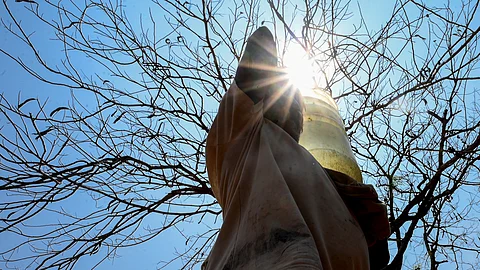

THIRUVANANTHAPURAM: At a time when Kerala is reeling under one of its harshest summers, – following prolonged dry spells and erratic weather patterns – the state is also staring at a major challenge in terms of inadequate weather readings and infrastructure.
Adding to the woes, experts point out that the national criteria for declaring heatwaves are not suited for Kerala’s weather patterns. High humidity levels, brought on by its tropical climate, make summers worse in the state, they say.
Even as sweltering heat plays havoc, experts and agencies here are grappling with inadequate predictions that hinder more specific public warnings. The 100 automatic weather stations (AWS) installed by the India Meteorological Department (IMD) have been giving erratic and invalid predictions. There are also no weather stations in four districts – Kasaragod, Wayanad, Idukki and Pathanamthitta – which cheats the state out of a comprehensive picture of the prevailing conditions.
State Disaster Management Authority member secretary Sekhar Lukose Kuriakose said the national criteria for heatwave declaration is not suited for Kerala.
“We need to develop local thresholds for heat-related health warnings. We need to undertake studies in this regard and have already initiated steps to come up with state-specific criteria that will be essential for the state in the coming years,” he told TNIE.
According to IMD, a heatwave is defined as a maximum temperature of 40 Celsius or more for the plains, 37C or more for coastal stations and 30C for hilly regions. An increase of 4-5C from the normal is considered a heatwave condition, while an increase of 6C or more is considered a severe heatwave condition.
“We have a moist heatwave situation in Kerala because of the rise in temperature and humidity. The heat we experience here is way more than the actual temperature.
Unfortunately, the state is unable to meet the criteria set by IMD and National Disaster Management Authority (NDMA). The state government should take steps to collaborate with IMD and come up with state-specific criteria,” said MG Manoj, a scientist with Cusat’s Advanced Centre for Atmospheric Radar Research (ACARR).
He stressed the need for more research in the area. “We need more weather readings and infrastructure, a long-pending demand in Kerala. In the future, more weather infrastructure should be set up at identified strategic points across the state for better predictions on microclimate changes. More data is essential for further studies and solutions,” he added.
The human body reacts differently to varying temperatures, health experts said, amid calls for increased inclusion of health management in climate change and mitigation policies of the government.
“Heatstroke and heat rash are only included as heat-related events by the NDMA. This should change and health should be given top priority, while devising policies for climate mitigation. We are trying to raise this point and educate policymakers to give due consideration to matters of health,” said Dr Anish T S, associate professor, community medicine, Malappuram Medical College Hospital.
Meanwhile, K Santhosh, director, IMD Thiruvananthapuram, said they follow the national criteria. “We follow the national criteria for weather-related declarations and the IMD headquarters make decisions on matters whether a state should have a specific set of criteria for heatwaves or not,” Santhosh said.
Calibrating weather stations cannot be a sudden process, he said. The Kerala Met department has proposed the setting up of more weather stations in the state to cover all districts, he added.
Yellow alert in 10 districts
KSDMA has issued a yellow alert for 10 districts in the state owing to a rise in temperature till March 20. All districts with yellow alert warnings are likely to record 2 to 4 degrees Celsius above normal temperature. Maximum temperature is likely to be around 39 degrees Celsius in Kollam and Palakkad districts, while Alappuzha and Kozhikode districts will record 38 degrees Celsius. Kottayam, Pathanamthitta and Thrissur districts are likely to record 37 degrees Celsius. Thiruvananthapuram, Ernakulam and Kannur districts will record 36 degrees Celsius.